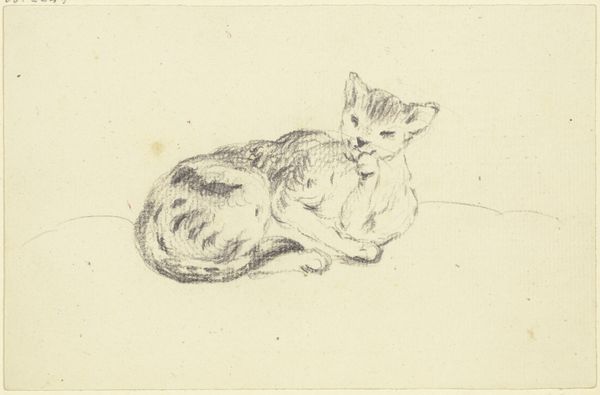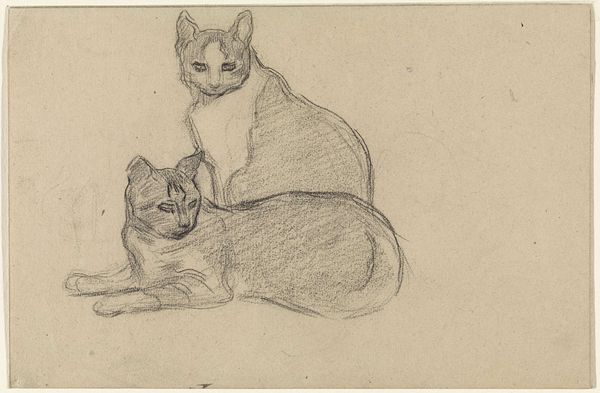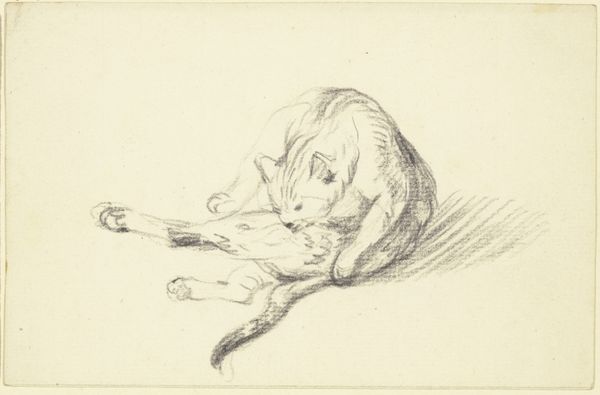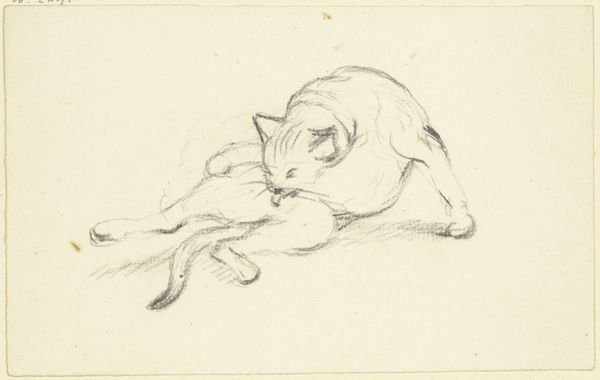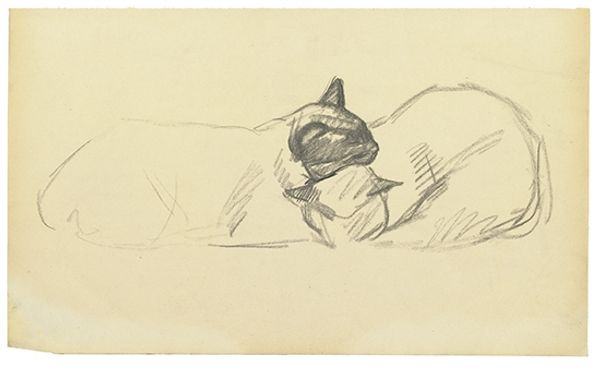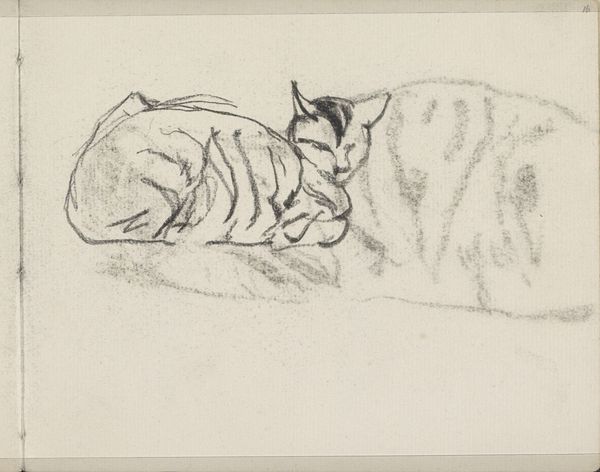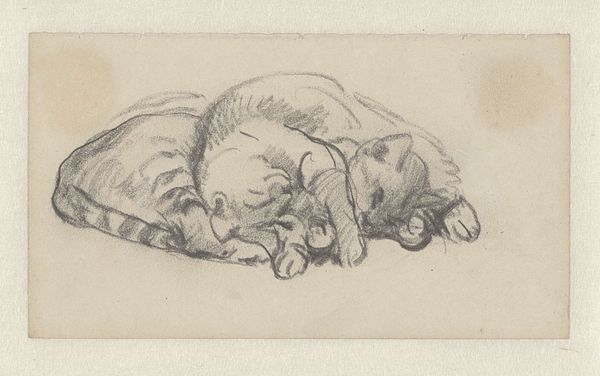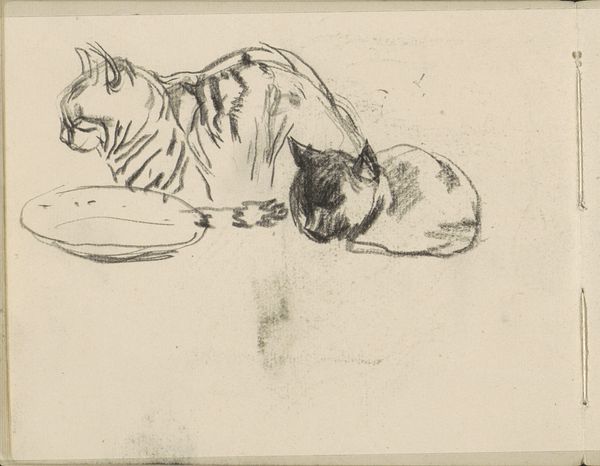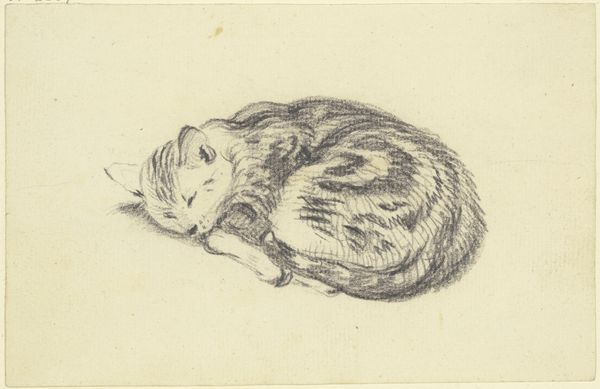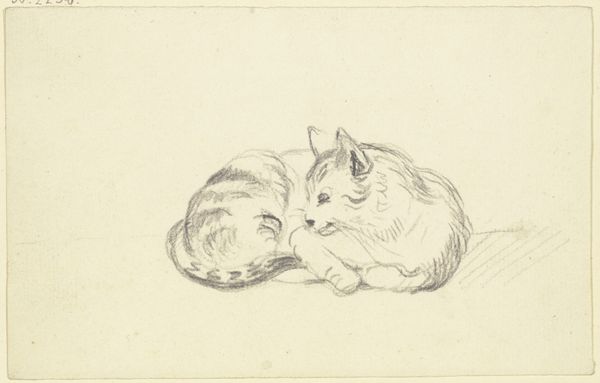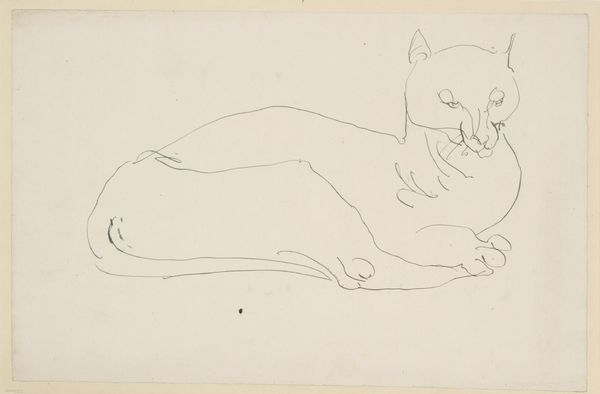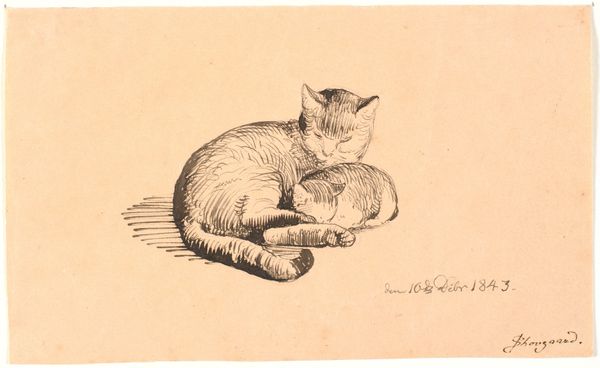
drawing, pencil
#
portrait
#
drawing
#
figuration
#
sketch
#
pencil
#
line
#
realism
Copyright: Public domain
Curator: Here we have a simple yet captivating sketch entitled "Two Cats" attributed to Théophile Alexandre Steinlen. It seems to be executed purely in pencil on paper. What strikes you first about this piece? Editor: Well, it has a really casual and intimate mood. I can almost feel the soft fur and hear the purrs. It is a rapidly made sketch, using accessible materials. This suggests it was probably an everyday practice rather than a formal commission. Curator: I agree. Notice the simplified forms, almost archetypal cats. They are not any particular breed but stand for cat-ness itself, conveying feline self-possession. In many cultures, cats represent independence and mystery. Editor: True, but let’s think about the material constraints. Pencil allows for corrections and speed; it is very different than, say, a fresco. And paper enabled Steinlen to quickly and cheaply explore form and light while on the go, to capture them on the streets. It seems that the process echoes the supposed “freedom” of the subject! Curator: I like that reading. There's also something deeply universal about the comfort they find in simple companionship. Cats have been domesticated for centuries and take on layered cultural connotations around domesticity, but especially of companionship. I think this speaks volumes. Editor: Definitely. Consider the market and audience too. Pencil sketches like this may have been produced for illustrations, journals, prints and for a broader audience to consume images that were reproducible. Steinlen wasn't making rarefied art here; it was art tied to industry and labor, to be owned as commodities. Curator: That brings a rich layer to it. It is not just about the feline mystique, but about how art can reach the common person, capturing small daily moments that all could relate to. These lines of work provided new channels of representations that created, transformed, and fed society through affordable distribution. Editor: Precisely. Seeing it through the lens of material and distribution changes the way we interpret these cozy domestic subjects. Instead of pure admiration, we see the gears of material culture at work! Curator: It highlights the accessibility, revealing something almost rebellious. The symbolism is still accessible, and tied to a wider emotional range. Editor: It seems we agree more than we thought! Even if coming from a slightly different point. Curator: Indeed, seeing through the lens of the symbol AND material reminds me there's always multiple entries into appreciating art!
Comments
No comments
Be the first to comment and join the conversation on the ultimate creative platform.
